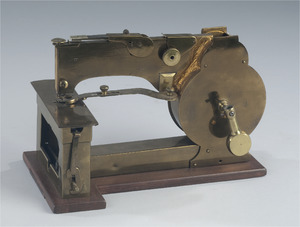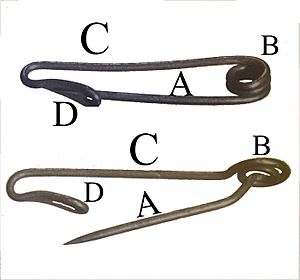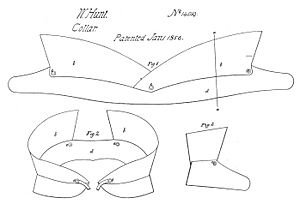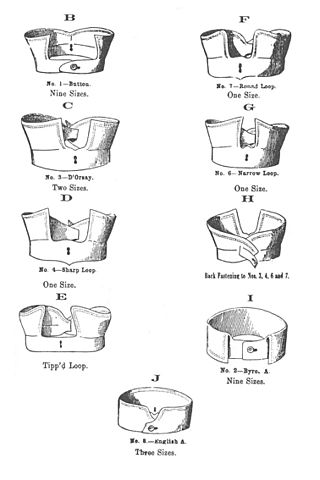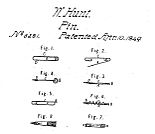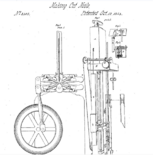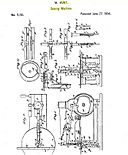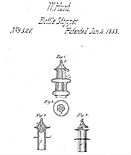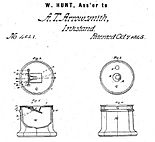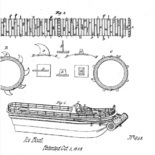Walter Hunt (inventor) facts for kids
Quick facts for kids
Walter Hunt
|
|
|---|---|
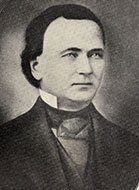 |
|
| Born | July 29, 1796 Martinsburg, New York, U.S.
|
| Died | June 8, 1859 (aged 62) |
| Known for |
|
| Spouse(s) | Polly Loucks (m1814) |
| Children | four |
Walter Hunt (born July 29, 1796 – died June 8, 1859) was an American mechanical engineer. He was famous for inventing many useful things. He first started inventing in New York, where he worked with flax, a plant used to make linen. Later, in New York City, he invented the streetcar gong, a bell used on horse-drawn streetcars. This led him to create other useful items like the safety pin and the sewing machine. He also invented early versions of the repeating rifle and the fountain pen. About 24 of his inventions are still used today, looking much like he first designed them. Even though he created so many useful things, he never became rich. He often sold his patent rights for low prices, meaning others made millions from his ideas, like the safety pin.
Contents
Early Life
Walter Hunt was born on July 29, 1796, in Martinsburg, New York. He was the first of 13 children. He went to a one-room schoolhouse when he was a child. Hunt was tall and strong, with a healthy complexion. In 1814, he married Polly Loucks, and they had four children. At age 21, in 1817, Hunt earned a master's degree in masonry, which is the skill of building with stone or brick.
Mid-Life and Inventions
In 1826, Hunt went to New York City to find money for one of his inventions. While there, he saw a horse-drawn carriage hit a child. This accident made him want to invent something to prevent such events. He came up with a metal bell that a driver could ring with their foot, without letting go of the horse's reins. Hunt received a patent for this invention on July 30, 1827. He sold his idea to a stagecoach company, and soon, most horse-drawn vehicles in the city used his foot-operated bell. This invention was later used all over the United States.
Many Inventions
Walter Hunt was a very busy inventor. From 1827 to 1830, while working in real estate, he invented many things. These included a fire engine, a better stove for burning coal, the first home knife sharpener, and a steam table for restaurants.
He also created early versions of the Winchester repeating rifle and the American fountain pen. Other inventions included a flax spinner, an improved oil lamp, artificial stone, and the first machine for sweeping streets. He also made machines for sorting mail, early bicycles called velocipedes, and ice plows. Hunt also improved guns, bullets, boats that could break ice, and self-closing inkwells. He even invented special suction-cup shoes for circus performers!
Hunt often did not realize how important his inventions were. He sold most of his patent rights for low prices, so he didn't make much money in the long run. However, many of his patented devices became very common products in the 20th century.
The Sewing Machine
Between 1835 and 1837, Walter Hunt developed the first modern, working sewing machine in his shop in New York City. He made and sold a few of these machines. At first, he did not get a patent for his invention.
His machine used a special stitch called a lockstitch. It had a needle with an eye near its point, and it used two threads. One thread would pass through a loop in the other thread, and then both would interlock. This was a new idea because, before this, inventors had tried to copy how people sewed by hand. Hunt's method was revolutionary for sewing. The needle moved on a vibrating arm, making a loop under the fabric. A shuttle then moved back and forth through this loop, creating an interlocked stitch. Hunt finished his working model before showing it to anyone.
In 1834, Hunt sold half of his patent rights for the sewing machine to a businessman named George A. Arrowsmith. Arrowsmith had Hunt's wooden machine copied in iron by Hunt's brother, Adoniram, who was a skilled mechanic. The iron version worked even better. However, Arrowsmith did not patent the machine right away. He said he was too busy, couldn't afford the patent costs, and thought it would be hard to introduce the new machine to the public.
Hunt did not seek a patent for his sewing machine at the time because he worried it would cause many seamstresses (people who sew for a living) to lose their jobs. His wife and daughter even advised him against selling it. His daughter, Caroline, ran a corset-making shop with 12 seamstresses and was concerned for their jobs.
This invention later led to a court case in 1854. Another inventor, Elias Howe, applied for a patent for a lockstitch sewing machine. Hunt then submitted his own patent application for his 1834 machine on April 2, 1853. The Supreme Court found that Hunt's invention was made before Howe's. However, the Patent Office did not give Hunt the patent. This was because he had not completed the proper paperwork before Howe's application and had stopped working on his design in the 1830s. So, while Hunt received public credit for his invention, Howe's patent remained valid due to the timing of the paperwork. In 1858, Isaac Singer planned to pay Hunt $50,000 to clear up confusion about sewing machine patents, but Hunt died before the agreement was finished.
The Safety Pin
Walter Hunt did not think much of the safety pin, even though it is his most famous invention. He sold its patent for $400 to W R Grace and Company. He did this to pay a draftsman who he owed $15 for drawing patent designs.
Hunt invented the safety pin in 1849 by experimenting with high-tension wire. His invention was a big improvement over old ways of fastening clothes. It had a protective clasp at one end and a coiled wire that created spring tension. This kept the pointed end safely inside the clasp, even if the pin moved around. The basic design of the safety pin is still the same today as when Hunt invented it. It is now made very cheaply. W R Grace and Company made millions of dollars from this simple product.
Other Inventions
One of Hunt's popular inventions was a paper shirt collar. This time, he sold the patent design and arranged to receive royalty payments (money for each item sold). However, the paper collar only became popular after he died. It was first sold in New York City in 1854 and mostly used for stage performances. Over time, it became fashionable, and the public started using them. Many factories began making paper collars, and by 1868, 400,000 were sold to the public.
Hunt often used the legal help of Charles Grafton Page, a patent lawyer who had worked at the US Patent Office. Hunt's inventions covered many different areas. About two dozen of his inventions are still used today in the same way he created them over 100 years ago.
Some of Hunt's important inventions are shown below with their patent drawings.
-
Fountain pen
Patent 4927
Later Life and Death
Walter Hunt created many useful everyday inventions during his life. However, he never became rich from them. He died from pneumonia at his business in New York City on June 8, 1859. He is buried in Green-Wood Cemetery in Brooklyn, New York. His grave is marked by a small red stone, not far from a much larger monument for Elias Howe.
Legacy
In 2006, Walter Hunt was added to the Inventors Hall of Fame for his invention of the safety pin. Many of Hunt's ideas are still used today, looking much like they did when he patented them over a century ago. Besides the safety pin and sewing machine, these include a device that controls how much liquid comes from a bottle, a bottle stopper, springy attachments for belts, and a machine for making nails.
See also
 In Spanish: Walter Hunt para niños
In Spanish: Walter Hunt para niños
- Daniel Davis Jr.


